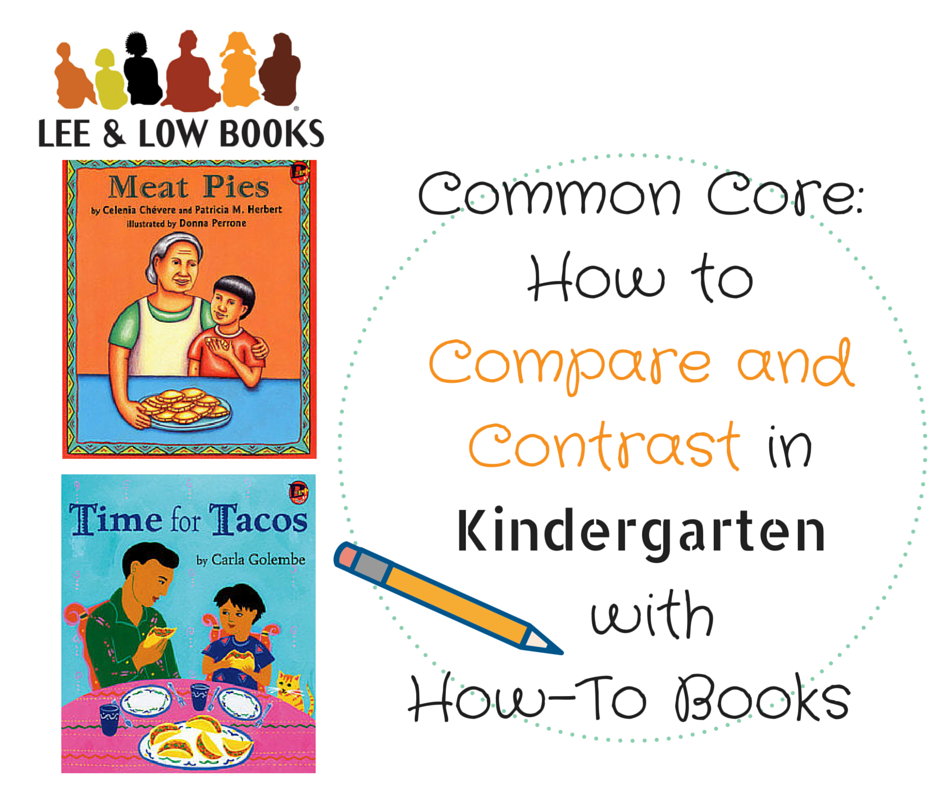 Over the past several weeks, I have demonstrated what compare and contrast can look like in second and third grade. Even as young as kindergarten, early readers can learn to compare and contrast successfully within and between texts. In doing so, teachers can assess students’ abilities at close reading, comprehension, and interpretation.
Over the past several weeks, I have demonstrated what compare and contrast can look like in second and third grade. Even as young as kindergarten, early readers can learn to compare and contrast successfully within and between texts. In doing so, teachers can assess students’ abilities at close reading, comprehension, and interpretation.
Below is a comparison of two books of similar topic and genre. I have created sample questions to teach towards and check mastery of each of the three Common Core categories. These are by no means the only questions to ask in each category, but these provide an overview of the progression in question complexity and mastery of the texts.
By creating a range of compare and contrast questions across the standards, we are able to differentiate for students within a class, provide extension opportunities for ready learners, or move the whole class from literal- to higher-level thinking over the course of several lessons.
Texts:
Meat Pies (Level: A)
Time for Tacos (Level: C)
Why: I have chosen these two books because they follow a similar format (following steps in a recipe) and share a central idea (how to make something). Both have minimal text so kinder readers have the opportunity to draw information from the illustrations and make inferences. The setting (family’s kitchen) and act of cooking with an adult are familiar experiences to most children. The repeating language patterns, picture-supported concepts, nameless flat characters, and accessible content further provide space to work with students on the higher skills of compare and contrast.
Key Ideas and Details:
- Key Ideas and Details: What are the characters in each book making? Who is making tacos and who is making meat pies? Which story has the grandmother? Which story has the father?
- Central Ideas: What are the main topics of each book? How do you know? How are the topics similar or different?
- Key Ideas and Details: What ingredients and utensils does the boy need to make meat pies? What does the other boy need to make tacos?
- Character Development: Compare the boys’ feelings about cooking and eating. How do the boys feel at the end of the books? How do you know?
- Literal Comprehension: What do the steps needed to make meat pies and tacos have in common? What is different about making meat pies and tacos?
- Inferences: Where and what time of day do Time for Tacos and Meat Pies take place? How do you know?
- Inferences: Why do the boys in both books need adult help making the meat pies and tacos?
Craft and Structure:
- Author Purpose: What is the purpose of telling each step of the recipes page by page?
- Genre: What kind of books are these? Are they storybooks, poems, etc.?
- Author Purpose: Both books use sentences that tell the reader and characters what to do. For example, in Time for Tacos, the books says, “Put in some beans,” rather than, “The boy put in some beans.” What is the purpose of the authors writing the books to tell the readers what to do?
- Word Choice: Both books use sentences that tell the reader and characters what to do. For example, in Time for Tacos, the books says, “Put in some tomatoes,” rather than, “You need to put in some tomatoes.” Why might the authors in both stories leave out who is supposed to do each step? What kind of sentences start with the action, instead of who (the subject) is doing it?
Integration of Knowledge and Ideas:
- Illustrations-Print Relationship: How do the pictures in each book help you figure out a new word?
- Illustrations-Print Relationship: What do the pictures have in common in each book? What moments in the book do the pictures capture?
- Big Picture Trends: If you were to make a book to teach your favorite recipe, what common features do these types of books need to have? What kinds of things happen in these books (step by step instructions, list of ingredients, etc.)? What are some things that will not happen in these kinds of books?
- Compare and Contrast: Have students study a recipe from home or a collection in a cookbook. How are Time for Tacos and Meat Pies similar or different from real world recipes? What features do they have in common, and what features are different? Compare the purposes of each.
What have you found successful in teaching how to compare and contrast? Share with us at curriculum@leeandlow.com!
Further reading on teaching literacy in Kindergarten:
- What Does Close Reading Look Like In Kindergarten?
- Building Classroom Community in Kindergarten
- How to Read with Your Rising Kinder This Summer
- Integrating Reading, Writing, Speaking & Listening In Grades K-1
Further reading on Compare and Contrast series:
- How To Compare And Contrast With The Common Core In First Grade
- How to Compare and Contrast with the Common Core in Second Grade
- How to Compare and Contrast with the Common Core in Third Grade
- How To Compare And Contrast With The Common Core In Fourth Grade
- How To Compare And Contrast With The Common Core In Fifth Grade
Jill Eisenberg, our Resident Literacy Expert, began her career teaching English as a Foreign Language to second through sixth graders in Yilan, Taiwan as a Fulbright Fellow. She went on to become a literacy teacher for third grade in San Jose, CA as a Teach for America corps member. She is certified in Project Glad instruction to promote English language acquisition and academic achievement. In her column she offers teaching and literacy tips for educators.










